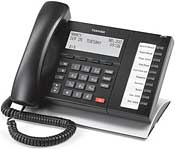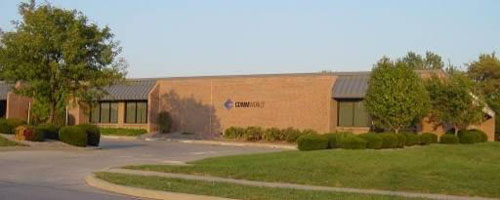Newsletter |
||||
|
||||
Free App turns a smartphone into an extension
|
||||
| Contact: | Bob Bennett at COMMWORLD of Kansas City 816-763-1100 reb@commworld-kc.com |
Read to the end for the answer to a question you have asked since childhood.

What's the scoop on Ground Hog Day?
February 2nd, Ground Hog Day, falls halfway between the winter solstice (shortest day of the year) and the spring equinox. That day has been important throughout history. The Celts celebrated Imbolc, a pagan festival of lights marking the beginning of spring. Imbolc evolved into Candlemas as Christianity spread through Europe. Candlemas commemorates the ritual purification of Mary 40 days after the birth of her child and the presentation of Jesus at the temple in Jerusalem. Some Christians believed that a sunny Candlemas meant there would be 40 more days of cold and snow. Germans considered the day to be sunny only if badgers and other animals saw their own shadows.
In the 18th and 19th centuries, German immigrants who settled in Pennsylvania continued the tradition. They chose the woodchuck, also known as a groundhog, to be their weather forecaster. On February 2, 1887 (or 1886 depending on which source you read) the first official Groundhog Day celebration was held in Punxsutawney, Pennsylvania at a site called Gobbler's Knob.
In 1993, the annual festivities at Punxsutawney were immortalized in the movie, "Groundhog Day" which was actually filmed in Woodstock, Illinois. Tens of thousands of visitors attend the celebration at Gobbler's knob each year. Local dignitaries don top hats and speak Pennsylvania Dutch as the groundhog, "Punxsutawney Phil, Seer of Seers, Sage of Sages, Prognosticator of Prognosticators and Weather Prophet Extraordinary" makes his prediction. If Phil sees his shadow, that means six more weeks of winter.
Another ground hog named Skippy holds a special place in my husband Bob's childhood memories. While plowing his field, a neighbor farmer had unearthed a groundhog burrow. The man saved one of the kits and took it to Bob's sister, Maggie, to nurture and raise. Skippy the groundhog flourished and became a loved family pet. She would build a "nest" of newspapers, socks and doilies behind the couch and when Bob's Mother swept it away, the groundhog fought the broom and then pouted over her loss. Skippy would tug on Bob's Father's pant leg to beg for a pill cup full of water. Then she would sit up, hold the miniature cup and happily drink the water like a human.
Skippy spent a little over two years with the family. She hibernated under the porch and was grumpy when she emerged in the spring, but soon became her sweet self again. She could open the screen door, so she came and went as she pleased. The family dogs accepted her, but when a neighbor stopped by with his dogs, they did what their instincts told them and that was the end of Skippy's short, but happy life.
Although the normal life span of a groundhog is six to eight years, Phil is said to be over 100 years old due to a magical punch he drinks at the Groundhog Picnic each summer. The National Climatic Data Center calculates the accuracy of Phil's predictions at 40%, but Punxsutawney residents claim it is 100%
And what about that age-old question we've all asked?
"How much wood could a woodchuck chuck if a woodchuck could chuck wood?"
According to a wildlife biologist at Cornell University - about 700 pounds.
Happy Groundhog Day!
If Candlemas Day be fair and bright
Winter will have another fight.
If Candlemas Day brings cloud and rain,
Winter won't come again.
…Traditional
Sources: http://groundhog.org/groundhog-day/fun-facts/,
http://www.history.com/news/groundhog-day-history-and-facts,
http://pittsburgh.about.com/cs/punxsutawney/a/groundhog_day.htm,
http://www.bbc.co.uk/religion/religions/christianity/holydays/candlemas.shtml
1st Quarter Promotions…
It's a Great Time to Upgrade your Telephone System
and Get Free Phones!
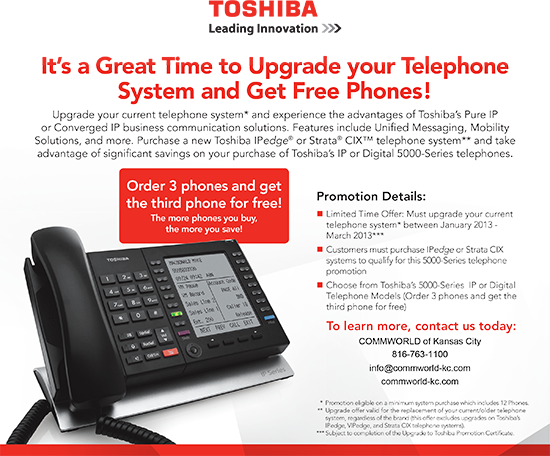
Migrate to the Cloud
Cloud-Based Telephone Solution Starting at $29.99
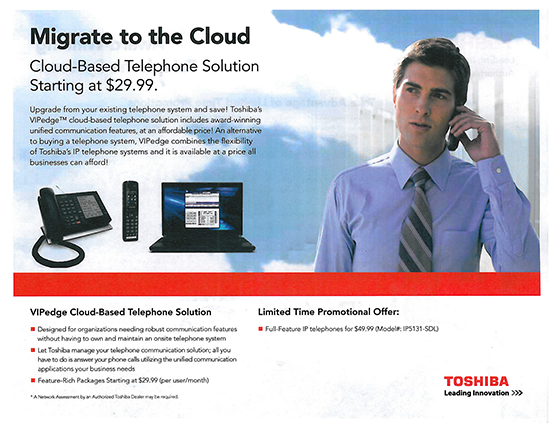
Fun Phone Facts…
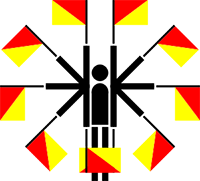
Today's Internet is like 18th Century Technology
Alexander Graham Bell's work on the harmonic telegraph led to the first patent for the telephone on March 7, 1876. Samuel Morse's first telegraph line was completed in 1843. Much earlier in the 1790's, a visual telegraph system called a semaphore was used to convey messages over long distances.
The semaphore system was invented during the French Revolution when it was imperative for the government to quickly communicate orders to the military. Some sources claim it was begun as a method for Claude Chappe and one of his brothers to communicate between two seminaries each was attending. The first documented message was sent on March 2, 1791 over a distance of 10 miles. It read in French: "If you succeed, you will soon bask in glory."
A network of 556 towers with large, moveable wooden arms eventually covered much of France. The towers were spaced at distances as far as the eye could see. It is estimated that up to 9,999 different codes could be sent using various positions of the crossbars and pivoting arms. Other European countries including Sweden, England and Germany also adopted the semaphore system.
Napoleon used the system to effectively communicate with his army. Samuel Morse's first proposals for the electric telegraph were rejected by the French government because the wires could be cut by outlaws and enemies.
There were downsides to the semaphore system.
- Rain, fog and night made them invisible.
- In good daylight, the messages were visible to anyone within eyesight range and the lack of secrecy could be fatal during wartime.
- They had to be manned continuously by highly trained men and so became expensive to run.
Professor J.M. Dilhac with the Institut National des Sciences Appliquées de Toulouse wrote a paper comparing the semaphore system with the internet of today. In "The Telegraph of Claude Chappe – An Optical Telecommunication Network for the XVIIIth Century", Professor Dilhac compares the issues of source coding, error detection and signal restoration, control and data signals, routing, regulation and fraud and dissemination of new social behaviors of the semaphore and the internet. He ends his paper with the following, "However, it is worth saying that even if modern data telecommunication networks are faster, bigger, more flexible and reliable, they are not intrinsically very different. They still use basic methods developed by men born and educated in the XVIIIth century."
Sources: http://www.britannica.com/EBchecked/topic/106172/Claude-Chappe,
http://www.ieeeghn.org/wiki/images/1/17/Dilhac.pdf,
http://artsonline2.tki.org.nz/resources/units/dancing_competencies/signal_it/semaphore_history.php,
http://flagexpressions.wordpress.com/2010/03/23/history-behind-semaphore-flags/
Copyright © 2012
COMMWORLD
of Kansas City
6200 Main St.
Grandview, MO 64030
Tel: (816) 763–1100
Fax: (816) 763–2433
E–mail: info@COMMWORLD–kc.com


